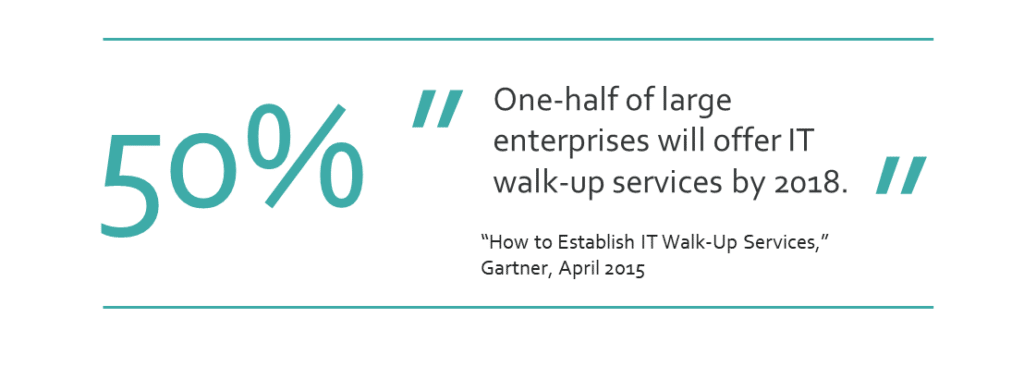
INSIGHT
(Re-) Introducing a Service Desk on-prem
After years of outsourcing Service Desks to service providers, large organizations invest in walk-up support counters. To fully understand this trend, you need to look beyond the Service Desk itself.

For years, in-house Service Desk staffs became redundant in cost reduction efforts as large organizations outsourced their help desk services to external service providers. Some were in offshore locations, available only via email or by phone. But now, of Gartner’s hype cycle for ITSM, 2017 puts “Walk-Up Support” and an “IT Support Live Chat” at the peak of its curve.
Why the Service Desk was outsourced
Did the outsourcing partners do such a poor job? Not necessarily. Of course there are many stories of irate customers struggling with Service Desk staff who have little if no domain knowledge. But many organizations have been satisfied with the services provided by their “long-distance” partners. Thus, a lack of partner trust is not the primary driver motivating this change.
Instead, we should probably rather see this shift in the context of other related trends. Commonly mentioned drivers include:
- End-users expectation levels. Technology savvy end-users with a considerable set personal gadgets expect to be treated with at least the same level of courtesy that they get as private consumers.
- Mobility. With the increased use of mobiles and tablets, the work-force has become more mobile and more exposed to error-prone user interfaces.
- BYOD. The driver many analysts mention is the bring-your-own-device trend which also entails aspects of the above bullet points.
- With digitalization our service requirements change and our demands on the Service Desk staff increase. Business processes that become completely dependent on digitized automation need the support of a staff with considerable local domain knowledge.
Cloud services and multi-sourcing
Although all of the above may be true, we believe another reason is equally important: the changing sourcing and cloud strategies of large organizations. The walk-up counter is not a replacement of other Service Desk channels – it is complementary. Today, our work-place environments often depend on a large numbers of services from a multiple providers – in-house, outsourced or in the cloud. Therefore, at times you have to consult many different Service Desks to solve even a simple problem. It therefore pays off to shield end-users from the complexities of the organization’s service delivery.
A Service Desk as a single point of contact for complex support chains

In organizations with a highly mobile work-force using services from multiple providers, even simple questions, such as password resets or WiFi connectivity problems, become out-of-reach for an external Service Desk provider.
Nonetheless, the walk-up support staff itself remains dependent on the organization’s sourcing partners’ and cloud service providers’ respective service desks.
Thus, we believe this trend can only be understood in the context of multi-sourcing and cloud migrations. Modern organizations need ways to orchestrate services which in turn depend on many levels of first line, second line and third line support. Providing end-users with the convenience of a single point of contact then becomes key. The on-premise Service Desk thus help large organizations in the orchestration of services from multiple vendors.
How does this relate to your experience? Do you have a different interpretation of this trend? Would you like to compare notes?
